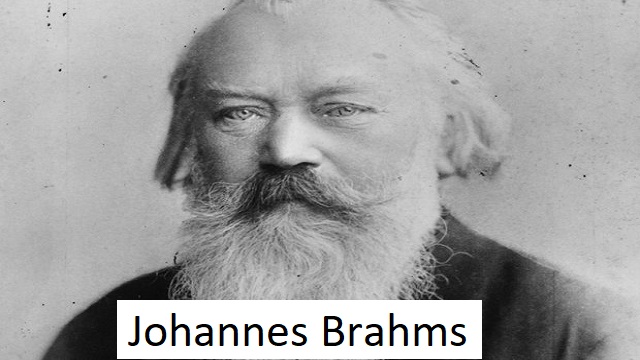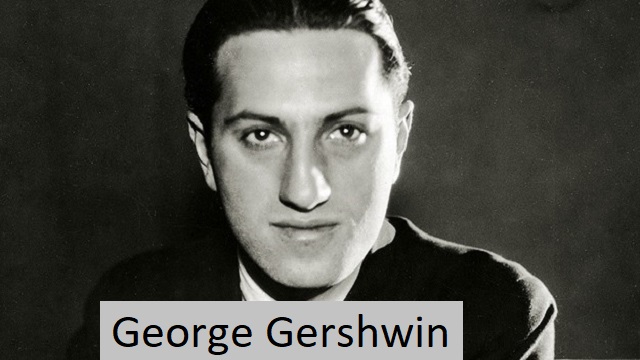Christoph Willibald Gluck, Ritter (Knight) von Gluck, (born July 2, 1714, Ersbach, near Berching, Upland, Bavaria [Germany] — died November 15, 1787, Vienna, Austria), German classical composer, best known for his works were including Orfeo ed Euridice (1762), Alceste (1767), Paride ed Elena (1770), Iphigénie en Aulide (1774), the French version of Orfeo (1774) and Iphigénie en Tauride (1779). He was knighted in 1756.

Youth
Gluck’s paternal ancestors, mainly foresters, belonged to the border region of Upper Palatinate and Bohemia. Nothing is known of his parentage on his mother’s side. His father, Alexander Gluck, moved to Erasbach as a forester in 1711-1712. The family then moved to Reichstadt near Bemisch Leipa in Bohemia. Between 1722 and 1727 they lived near Bemisch-Kamnitz and then in Eisenberg (near Komotau) until 1736. Wanted by his father to continue the family forestry business, Gluck showed a strong inclination towards music from an early age. To avoid quarreling with his father, the young Gluck left home (probably around 1727) and made a living by music, moving to Prague where he played in churches and began studying at a university (1731), where he graduated with a degree in music. Continued his studies. He went to Vienna in the winter of 1735/36. There he was discovered by a Lombard nobleman who took him to Milan, where he spent four years studying composition with the Italian organist and composer Giovanni Battista Sammartini, in addition to performing duties in the Melzi family’s chapel. New Italian. Instrumental style music. The six trio sonatas, consisting of two movements with a mini salamander at the end, were probably printed in London in 1746 and the result of studies with Sammartini in Milan. In addition to the six “London” sonatas, Gluck probably composed other trio sonatas under Sammartini. On 26 December 1741, at the Teatro Ducale in Milan, Gluck achieved his first great dramatic success with his first opera, Artaserse, with a libretto by P. The Metastasio lasted until 1745, after which operas continued annually in theaters: Demophonte (1742), Arsas (with G.B. Lampugnani; 1743), Sophonisba (1744), Ippolito (1745). Gluck also wrote Cleonis (Demetrio) (1742) about Venice. Il Tigrane (1743) for Crema; Burroughs of Turin (1744). In these early works, which have only survived in fragments, Gluck largely followed the current Italian opera fashion: euphonious, but never grandiose, neither intense nor charming. However, the occasional outbursts of intense passion and the onset of characterization foreshadowed the great composer of the play he was to become.
Middle years
In 1745, Gluck, now known as an opera composer, was invited to England at the instigation of Lord Middlesex, director of Italian opera at the Market Theaters in London, to challenge Handel’s tight control over the London opera audience. The plan initially backfired, as all London theaters closed before Gluck’s arrival in England due to the political turmoil caused by Stewart’s rise to power. After the situation calmed down, theatrical activities resumed on 3 January with the performance of Gluck’s opera La caduta de’ giganti. 17, 1746; Booklet by A. Vanishi glorifies the hero of that time, the Duke of Cumberland, after his victory at Culloden over the troops of Charles Edward, Prince Stewart, who took the throne of England. This work, like Gluck’s second opera Artamine, produced on 14 March 1746, consisted mostly of music taken from his earlier works, and lack of time led him to use the organ. No operas were successful. On 25 March, shortly after the production of Artamene, Handel and Gluck performed a concert together at the Haymarket Theater featuring works by Gluck and an organ concerto by Handel performed by the composer. Despite Handel’s often-cited criticism that Gluck had no counterpoint skills, Gluck caught Handel’s interest (Handel said that Gluck “doesn’t know counterpoint as much as my cook”). was). According to Irish singer Michael Kelly, Gluck himself tried to imitate Handel.
After leaving England (probably in 1746), Gluck made contact with two moving opera houses, one of which was his opera at Pillnitz Castle near Dresden on 29 June 1747. staged his serenade, The Marriage of Ercole and Debe. Double marriage in electoral families in Bavaria and Saxony. By early 1748 at the latest, Gluck returned to Vienna to work on Pietro Metastasio’s Semiramide riconosciuta for the opening of the Burgtheater on 14 May 1748. Although Metastasio personally described his music as “savage”, it was a huge success for the composer. It’s unacceptable. “It was then that Gluck met his future wife, Marianne Bergin, the 16-year-old daughter of a wealthy merchant. In the same year, P. And A. Mingotti went to Copenhagen via Hamburg, toured with the opera troupe, and composed the opera serenade The Contest of the Gods in honor of the birth of the heir to the Danish throne. This work somewhat foreshadows his later reform works. During the next two winters, Gluck remained in Prague, where he wrote Ezio (1750) and Isabelle (1751–1752). september. On May 15, 1750, he married Marianne at St. Ulrich’s Church in Vienna. Their marriage, which was childless, was reportedly harmonious. Gluck then adopted his niece, Marianne. Before the young couple settled permanently in Vienna in the winter of 1752–1753, Gluck took his wife to Naples for the summer of 1752, where he composed the music for Metastasio’s play La clemenza di Tito, followed by the text D.’ Arce had been rejected, which he had already set to music once.
In Vienna, Gluck soon found a patron in the person of the Imperial Marshal, Prince Joseph Friedrich von Sachsen-Hildburghausen, who appointed him first musical director of his orchestra, then conductor. Gluck successfully performs his symphonies and arias during weekly concerts at the Prince’s Palace and particularly marks the spirits with his lyrical opera Le Cinesi, staged on September 14. On January 24, 1754, in the presence of the Emperor and Empress during a magnificent party at Schlosshof Castle. This success may have contributed to the decision of the director of the court theater to entrust Gluck with “theatrical and academic music” for the imperial court. On May 5, 1755, Gluck’s opera La danza was staged at the Luxenberg royal palace near Vienna and on December 8 of the same year, L’innocenza giusticitta followed. The following year (1756) he saw The Ripstor in Vienna, while the premiere of the opera Antigono was given during a visit to Rome. In Rome Gluck was made a Knight of the Golden Spurs and, on his return to Vienna, began to provide music for many French stele comedies imported from Paris. Tircis and Doristea (1756) was perhaps the first such attempt. These Parisian comedy lines were spoken and sung in street songs, so-called tones. After 1758 Gluck worked more freely, La Force Esclave, L’Isle de Merlin (1758), La Cytaire Hachéger (1759), Le Diable à Quatre, Arbre-en He wrote Chanté (1759) and Livronne Collier (1759). Such 1760) and his Le Cadie Dupe (1761) included, in addition to the overture, an increasing number of new songs in place of the classic vaudeville tunes. La Rencontre Imprévue was first performed in Vienna on January 7, 1764, and is completely devoid of vaudeville elements, making the work a perfect example of comic opera. Gluck used “oriental” instrumental effects to add charm to the scores of Le Cadi dupé and La Rencontre imprévue. The beautiful melodies and programmatic descriptions of many of the arias suggest further developments in Gluck’s operatic style. For example, L’Île de Merlin and L’Ivrogne corrigé have the first examples of complex scene development.
Later works by Christoph Willibald Gluck
In Paris, Gluck left friends and enemies, who began to form two opposing parties: his supporters, the Gluckists, led by the French writers and music critics François Arnaud and Jean-Baptiste-Antoine Suard, and his opponents. , Italian composer n. Piccini followed, persuaded to come to Paris in the summer of 1776 to write an opera in contrast to Gluck’s style. The conflict, which reached its climax in 1777, saw neither Gluck nor Pizzini take an active part in the conflict. Gluck completed Armide in Vienna, but destroyed the sketch for Roland when he learned that Pixini was putting down the same text for Paris.






